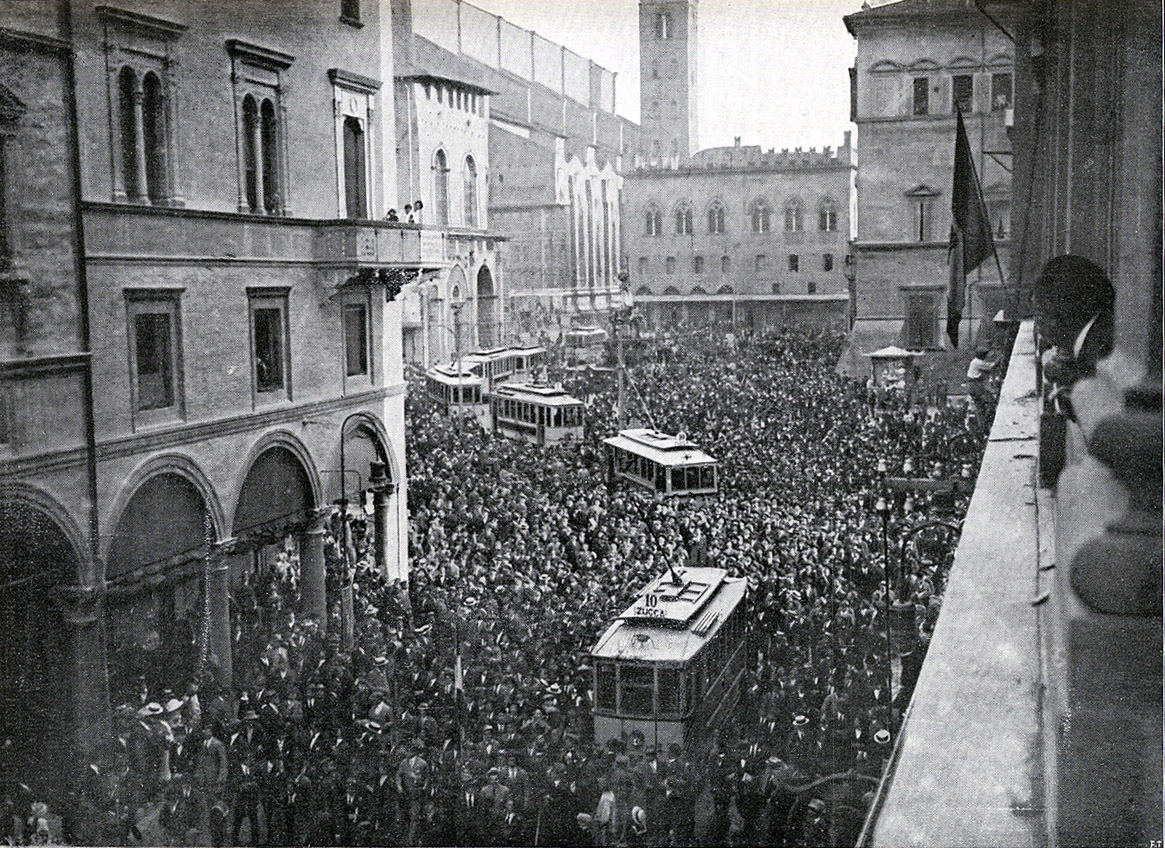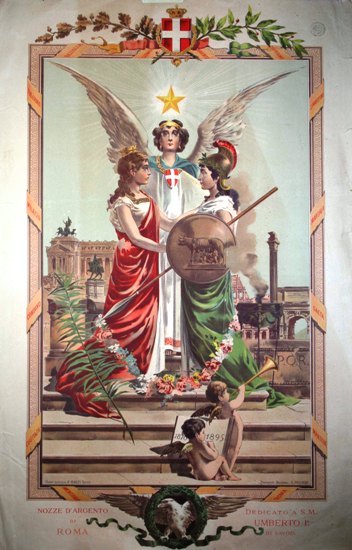|
Bollettino Della Vittoria Navale
The Bollettino della Vittoria Navale is the official document written after the armistice of Villa Giusti with which the admiral Paolo Thaon di Revel, supreme commander of the Royal Italian Navy, announced, on 12 November 1918, the surrender on the seas of the Austro-Hungarian Empire and Italy's victory in the World War I. Description The ''Bollettino della Vittoria Navale'' was issued on 12 November 1918 by the ''Etna'' ship, which was anchored in the port of Brindisi: the latter had in fact been the main operational center of the war in the Adriatic Sea. Legacy From the cataloging of the documents of Paolo Emilio Thaon di Revel, kept at the ''Spadolini Foundation'' in Florence, it emerged that his material author was actually Gabriele D'Annunzio. Similarly, the '' Bollettino della Vittoria'' was signed by general Armando Diaz, supreme commander of the Royal Italian Army. A similar bulletin was never drafted for the air forces, given that the latter were part of the Aeronau ... [...More Info...] [...Related Items...] OR: [Wikipedia] [Google] [Baidu] |
Livorno Palazzo Comunale Plaque 01
Livorno () is a port city on the Ligurian Sea on the western coast of Tuscany, Italy. It is the capital of the Province of Livorno, having a population of 158,493 residents in December 2017. It is traditionally known in English as Leghorn (pronounced , "Leghorn" in the . or ). During the , Livorno was designed as an "". Develo ... [...More Info...] [...Related Items...] OR: [Wikipedia] [Google] [Baidu] |
Royal Air Force
The Royal Air Force (RAF) is the United Kingdom's air and space force. It was formed towards the end of the First World War on 1 April 1918, becoming the first independent air force in the world, by regrouping the Royal Flying Corps (RFC) and the Royal Naval Air Service (RNAS). Following the Allied victory over the Central Powers in 1918, the RAF emerged as the largest air force in the world at the time. Since its formation, the RAF has taken a significant role in British military history. In particular, it played a large part in the Second World War where it fought its most famous campaign, the Battle of Britain. The RAF's mission is to support the objectives of the British Ministry of Defence (MOD), which are to "provide the capabilities needed to ensure the security and defence of the United Kingdom and overseas territories, including against terrorism; to support the Government's foreign policy objectives particularly in promoting international peace and security". T ... [...More Info...] [...Related Items...] OR: [Wikipedia] [Google] [Baidu] |
Italian Front (World War I)
The Italian front or Alpine front ( it, Fronte alpino, "Alpine front"; in german: Gebirgskrieg, "Mountain war") involved a series of battles at the border between Austria-Hungary and Italy, fought between 1915 and 1918 in the course of World War I. Following secret promises made by the Allies in the 1915 Treaty of London, Italy entered the war aiming to annex the Austrian Littoral, northern Dalmatia, and the territories of present-day Trentino and South Tyrol. Although Italy had hoped to gain the territories with a surprise offensive, the front soon bogged down into trench warfare, similar to that on the Western Front in France, but at high altitudes and with very cold winters. Fighting along the front displaced much of the local population, and several thousand civilians died from malnutrition and illness in Italian and Austro-Hungarian refugee-camps. The Allied victory at Vittorio Veneto, the disintegration of the Habsburg empire, and the Italian capture of Trento and ... [...More Info...] [...Related Items...] OR: [Wikipedia] [Google] [Baidu] |
National Symbols Of Italy
National symbols of Italy are the symbols that uniquely identify Italy reflecting its history and culture. They are used to represent the Nation through emblems, metaphors, personifications, allegories, which are shared by the entire Italian people. Some of them are official, i.e. they are recognized by the Italian state authorities, while others are part of the identity of the country without being defined by law. Description The three main official symbols, whose typology is present in the symbology of all nations, are: * the flag of Italy, that is, the national flag in green, white and red, as required by article 12 of the Constitution of the Italian Republic; * the emblem of Italy, that is the iconic symbol identifying the Italian Republic; * The ''Il Canto degli Italiani'' by Goffredo Mameli and Michele Novaro, the Italian national anthem, which is performed in all public events. Of these only the flag is explicitly mentioned in the Italian Constitution; this normat ... [...More Info...] [...Related Items...] OR: [Wikipedia] [Google] [Baidu] |
Trento
Trento ( or ; Ladin and lmo, Trent; german: Trient ; cim, Tria; , ), also anglicized as Trent, is a city on the Adige River in Trentino-Alto Adige/Südtirol in Italy. It is the capital of the autonomous province of Trento. In the 16th century, the city was the location of the Council of Trent. Formerly part of Austria and Austria-Hungary, it was annexed by Italy in 1919. With 118,142 inhabitants, Trento is the third largest city in the Alps and second largest in the historical region of Tyrol. Trento is an educational, scientific, financial and political centre in Trentino-Alto Adige/Südtirol, in Tyrol and Northern Italy in general. The city contains a picturesque Medieval and Renaissance historic centre, with ancient buildings such as Trento Cathedral and the Castello del Buonconsiglio. Together with other Alpine towns Trento engages in the Alpine Town of the Year Association for the implementation of the Alpine Convention to achieve sustainable development in the ... [...More Info...] [...Related Items...] OR: [Wikipedia] [Google] [Baidu] |
Trieste
Trieste ( , ; sl, Trst ; german: Triest ) is a city and seaport in northeastern Italy. It is the capital city, and largest city, of the autonomous region of Friuli Venezia Giulia, one of two autonomous regions which are not subdivided into provinces. Trieste is located at the head of the Gulf of Trieste, on a narrow strip of Italian territory lying between the Adriatic Sea and Slovenia; Slovenia lies approximately east and southeast of the city, while Croatia is about to the south of the city. The city has a long coastline and is surrounded by grassland, forest, and karstic areas. The city has a subtropical climate, unusual in relation to its relatively high latitude, due to marine breezes. In 2022, it had a population of about 204,302. Capital of the autonomous region of Friuli Venezia Giulia and previously capital of the Province of Trieste, until its abolition on 1 October 2017. Trieste belonged to the Habsburg monarchy from 1382 until 1918. In the 19th century t ... [...More Info...] [...Related Items...] OR: [Wikipedia] [Google] [Baidu] |
Pula
Pula (; also known as Pola, it, Pola , hu, Pòla, Venetian; ''Pola''; Istriot: ''Puola'', Slovene: ''Pulj'') is the largest city in Istria County, Croatia, and the seventh-largest city in the country, situated at the southern tip of the Istrian peninsula, with a population of 52,411 in 2021. It is known for its multitude of ancient Roman buildings, the most famous of which is the Pula Arena, one of the best preserved Roman amphitheaters. The city has a long tradition of wine making, fishing, shipbuilding, and tourism. It was the administrative centre of Istria from ancient Roman times until superseded by Pazin in 1991. History Pre-history Evidence of the presence of '' Homo erectus'' one million years ago has been found in the cave of Šandalja near Pula. Pottery from the Neolithic period (6000–2000 BC), indicating human settlement, has been found around Pula. In the Bronze Age (1800–1000 BC), a new type of settlement appeared in Istria, called 'gradine', or Hi ... [...More Info...] [...Related Items...] OR: [Wikipedia] [Google] [Baidu] |
Piave (river)
The Piave ( la, Plavis, German: ''Ploden'') is a river in northern Italy. It begins in the Alps and flows southeast for into the Adriatic Sea near the city of Venice. One of its tributaries is the Boite. In 1809 it was the scene of a battle during the Napoleonic Wars, in which Franco-Italian and Austrian forces clashed. In 1918, during World War I, it was the scene of Battle of the Piave River, the last major Austro-Hungarian attack on the Italian Front, which failed. The Battle of the Piave River was a decisive battle of World War I on the Italian Front. The river is thus called in Italy ''Fiume Sacro alla Patria'' (Sacred River of the Homeland) and is mentioned in the patriotic song " La leggenda del Piave". It was eventually followed by the Battle of Vittorio Veneto later that year. Viticulture North of the city of Venice along the Piave river valley is the ''Denominazione di origine controllata'' (DOC) zone that makes up the Veneto wine region known as the Piave DOC. ... [...More Info...] [...Related Items...] OR: [Wikipedia] [Google] [Baidu] |
Premuda
Premuda () is a small island in Croatia, off the northern Adriatic coast. It belongs to the north Dalmatian islands which are situated north-west from the county center Zadar. Premuda is approximately long, up to wide, and has an area of . It is situated southwest of Silba and northwest of Škarda and is the last island before the Italian coastline. Premuda was first mentioned in historical sources by ''Tabula Peutingeriana'', as Pamodos. In the 7th century, the island is mentioned as Primodia, derived from Latin ''primus'' ("the first"), indicating its geographical position as the first island in the Zadar Channel seen from the northwest. In 16th and 17th centuries Premuda was targeted by Ottoman corsairs who took the islanders away as slaves. This reduced the island's population to just 26 in 1608. In the 18th century, the island recovered through immigration, mostly from Olib, and by 1760 the population grew to 322. Natural water resources on Premuda are scarce, which ... [...More Info...] [...Related Items...] OR: [Wikipedia] [Google] [Baidu] |
Brindisi
Brindisi ( , ) ; la, Brundisium; grc, Βρεντέσιον, translit=Brentésion; cms, Brunda), group=pron is a city in the region of Apulia in southern Italy, the capital of the province of Brindisi, on the coast of the Adriatic Sea. Historically, the city has played an important role in trade and culture, due to its strategic position on the Italian Peninsula and its natural port on the Adriatic Sea. The city remains a major port for trade with Greece and the Middle East. Its industries include agriculture, chemical works, and the generation of electricity. The city of Brindisi was the provisional government seat of the Kingdom of Italy from September 1943 to February 1944. Geography Brindisi is situated on a natural harbour, that penetrates deeply into the Adriatic coast of Apulia. Within the arms of the outer harbour islands are Pedagne, a tiny archipelago, currently not open and in use for military purposes (United Nations Group Schools used it during the interven ... [...More Info...] [...Related Items...] OR: [Wikipedia] [Google] [Baidu] |
Kingdom Of Italy
The Kingdom of Italy ( it, Regno d'Italia) was a state that existed from 1861, when Victor Emmanuel II of Sardinia was proclaimed King of Italy, until 1946, when civil discontent led to an institutional referendum to abandon the monarchy and form the modern Italian Republic. The state resulted from a decades-long process, the '' Risorgimento'', of consolidating the different states of the Italian Peninsula into a single state. That process was influenced by the Savoy-led Kingdom of Sardinia, which can be considered Italy's legal predecessor state. Italy declared war on Austria in alliance with Prussia in 1866 and received the region of Veneto following their victory. Italian troops entered Rome in 1870, ending more than one thousand years of Papal temporal power. Italy entered into a Triple Alliance with the German Empire and the Austro-Hungarian Empire in 1882, following strong disagreements with France about their respective colonial expansions. Although relations wi ... [...More Info...] [...Related Items...] OR: [Wikipedia] [Google] [Baidu] |





